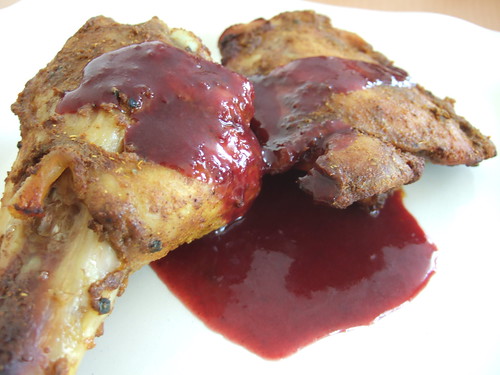I was in my neighborhood African store ordering my usual halal lamb meat when these tomato-looking things caught my eye. I asked the lady if they were tomatoes. We call them chungu, she said, but couldn’t help me with its American name. Do they taste like tomatoes? She couldn’t answer that either, so she got off her seat behind the counter, walked to one of the shelves and picked up a can of eggplants. Like this, she said, pointing to the can. I asked how I can cook them and she just told me to make my usual stew and add them. I just bought some Thai eggplants from Chinatown to add to a tagine dish, so I was curious how different the African kind would be. I picked up a few to try out.
When making my chicken tagine–the Dr. is a big fan and it’s one of the dishes I’ve mastered in the last couple of years–I skipped the potatoes and added the two kinds of eggplants instead. I diced them only before I was ready to add them to the pot so that the flesh kept its natural white color. (If you use eggplants, whether they be the fat and bulbous American type or the long and skinny Japanese kind, you know that the spongy meat inside turns black if you have them sitting out for a few minutes.)
The more familiar types are purple in color, aubergines as the French call them, but the African chungus I bought were green and had tight, shiny skins; the Thai type has a marbling pattern of green and white. It was an affordable vegetable to throw in a big pot of simmering meat, and turns out, tastes just like the other eggplants that come in different shapes and colors.





